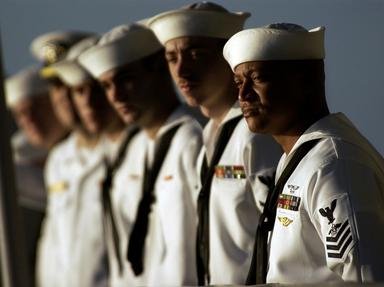Answer: BB-59 USS Massachusetts
BB-59, USS Massachusetts was built in the Fore River Shipyard of the Bethlehem Steel Company/Corporation in Quincy, Massachusetts. According to the National Park Service's Maritime History of Massachusetts (the site is on the maritime history of the state, not the ship specifically) page on her, at a displacement of 35,000 tons the Massachusetts was the heaviest ship to be launched at Quincy at the time she was launched, which lead to her being called Big Mamie.
Massachusetts would conduct her shakedown cruise in Maine's Casco Bay before she departed in late October to take part in the Torch landings. She would serve as the flagship of Admiral Robert C. Giffen's Covering Group during the landings. On November 8, 1942 Massachusetts and the heavy cruiser CA-37 USS Tuscaloosa would get into a largely one sided gun duel with the unfinished Jean Bart. Construction on the French battleship, much like Massachusetts, had begun in the '30s but she was unfinished when the war began. When it became clear the Germans were going to win the Battle of France, the French sent Jean Bart to Casablanca to keep her out of German hands. But as the Vichy government effectively became a puppet of Germany, the Jean Bart would be used to try to prevent Allied forces from taking Casablanca. However, in the battle of November 8th, Jean Bart only managed to fire seven rounds from her four 15-inch guns. In comparison, Massachusetts' nine 16-inch guns fired five volleys, each volley being made up of six to nine rounds PER gun. One of Massachusetts' rounds disabled Jean Bart's rotational equipment on her turret, taking it out of action for a 48 hour period.
BB-2 USS Massachusetts was an Indiana-class battleship and the second U.S. battleship to officially be designated Battleship (BB). She saw service during the Spanish-American War and as a gunnery training ship during WWI. BB-54 USS Massachusetts was a member of the planned South Dakota-class of the '20s. Because of the Washington Naval Treaty of 1922, construction on this class was halted and all six ships were scrapped. The six were to have been BB-49 USS South Dakota, BB-50 USS Indiana, BB-51 USS Montana, BB-52 USS North Carolina, BB-53 USS Iowa, and the Massachusetts. North Carolina, South Dakota, Iowa, and Montana would become the names of the intended four fast battleship classes respectively (though the Montana-class would be canceled before any of the ships in the class could be laid down) and five of the six names would be built as fast battleships. The North Carolina-class battleship BB-55 USS North Carolina; the South Dakota-class battleships BB-57 USS South Dakota, BB-58 USS Indiana, BB-59 USS Massachusetts; the Iowa-class battleship BB-61 USS Iowa. BB-20 was actually the Connecticut-class battleship USS Vermont.
 There are 344 questions on this topic. Last updated Jul 15 2025.
There are 344 questions on this topic. Last updated Jul 15 2025.
 Quick Question
Quick Question